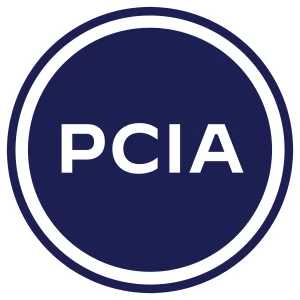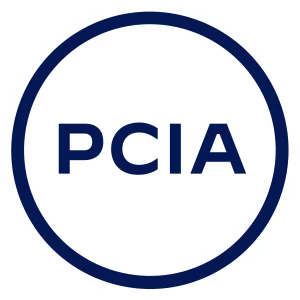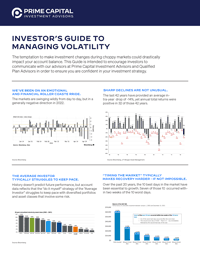Some of the new SECURE 2.0 provisions are already live, and there are more coming on the horizon. The big idea behind all of them is to increase retirement readiness for Americans by making it easier for them to get employer-sponsored retirement benefits.
Background
At the end of 2022, legislation was signed law which included a bill called SECURE 2.0, an update intended to build upon the changes made by the SECURE (Setting Every Community Up for Retirement Enhancement) Act of 2019.
Implementation of the SECURE bills is shaking up how employer sponsored retirement plans work, because they contain so many provisions. Plus, rather than taking effect all at once, they are being slowly rolled out over several years, causing further complications in the understanding of requirements. The IRS has issued some clarifications, but the whole financial industry has been impacted.
Here are some of the highlights that you may want to know about!
2023
RMD Age Raised
Going into effect immediately in 2023 was the raising of the RMD (required minimum distribution) age to 73. (In 2033, the age will raise again to 75.) Required minimum distributions are annual mandatory withdrawals you have to take from your taxable retirement accounts like traditional 401(k)s and IRAs, with income taxes due on the amounts withdrawn in the year they’re taken.
RMD Penalties Lowered, and Limited
The IRS mandates the withdrawal of RMDs by midnight of the year due, in the proper percentages withdrawn from the right accounts. This can be complex to figure out, and the penalties used to be very high on top of the income tax due for getting RMDs wrong.
Effective January 1, 2023, the SECURE Act 2.0 reduced the individual tax penalty for failure to take the RMD properly from 50% to 25%, and possibly to 10% if the RMD is “timely corrected”—timely generally meaning corrected or taken within two years.
Additionally, a statute of limitations was created by the law, limiting the period in which the IRS can impose a penalty: three years for missed RMDs and six years from the tax-filing deadline of the year in which an excess contribution was made. Previously there was no statute of limitations.
2024
Employer Matching Contributions Can Now Be Roth
Employer matching contributions can now, at an employee’s option, be made into a Roth account such as a Roth 401(k) in 2024. Previously they always had to be made on a pre-tax basis. The employee, however, pays the income tax on this matching amount.
No RMDs Required for Roth 401(k)s
Starting this year, Roth 401(k) contributions will no longer be subject to RMDs (required minimum distributions) during the owner’s lifetime, a change that makes sense since the money has already been taxed when it was contributed. This will bring Roth workplace plans in line with laws governing Roth IRAs, whereby Roth account dollars are excluded from RMD calculations.
401(k) Catch-up Contributions for High Earners to Must Go To Roth Accounts
Effective January 1, all catch-up contributions made by highly-paid participants into workplace retirement accounts must be made on a Roth (after-tax) basis. (The catch-up amount for those aged 50 and older for 2024 is capped at $7,500 in addition to the annual contribution limit of $23,000 to a 401(k) or similar account.) “Highly-paid” means those with more than $145,000 in wages in 2023.
IRA (Individual Retirement Account) Catch-up Contributions Indexed to Inflation
The $1,000 catch-up contribution amount allowed for IRAs—allowed for those age 50 and older—will be indexed to inflation in $100 increments, so the allowed contribution amount may finally go up. The IRA contribution limits for 2024 are $7,000 for those under age 50, and $8,000 for those age 50 or older if all income requirements are met.
SEP Plans and SIMPLE IRA Plans Now Have Roth Option
Roth (after-tax) contributions can now be made to SEP (Simplified Employee Pension) and SIMPLE (Savings Incentive Match Plan for Employees) IRAs, which are retirement plans for small businesses. Only employers make contributions with SEPs, while with SIMPLEs, both employees and employers make contributions. Until now, contributions to SEP and SIMPLE IRAs had to be pre-tax.
Student Loan Option For Matching
Effective January 1, employers can offer individuals the option to pay down a student loan instead of contributing to a 401(k) plan and still receive an employer match into their workplace retirement plan. NOTE: This option is strictly up to the employer.
Long-Term Care Insurance Payments
This year, employees can take up to $2,500 per year in distributions from their retirement plan to pay for LTC (long-term care) insurance, including traditional standalone LTC as well as hybrid life and annuity insurance contracts. While there are no tax penalties, income tax must be paid on amounts withdrawn to pay for LTC insurance premiums.
Emergency Savings Accounts
This year, retirement plan sponsors can offer non-highly compensated employees—for 2024, this means someone who is not a 5% or higher owner of the business or did not receive more than $150,000 in compensation in 2023—the option to link an emergency savings account to their retirement account, with a $2,500 cap. The employer can auto-enroll; the employee has the option to opt-out. Balances are eligible for distribution at least once per month to pay for unexpected expenses, and the first four distributions in any year must be free from fees.
2025
Retirement Workplace Plan Auto-Enrollment
Starting in 2025, most businesses will be required to automatically enroll employees in group retirement plans, with employees contributing between 3% and 10% of their wages. (Employees will still have the option of opting-out.) Each year, the contribution will increase by 1% until it reaches at least 10% (although not more than 15%). For workers earning less than $71,000 per year, the federal government will provide a 50% match up to $2,000 in employee cash contributions, which means the government will provide a maximum of $1,000 deposited directly into retirement accounts. Part-time employees can participate in a company retirement plan if they work with their employer for one year with 1,000 hours of service or two consecutive years with at least 500 hours of service per year.
Catch-Up Contributions Increase
In 2025, the catch-up contribution amount for workplace plan participants aged 60 to 63 will increase to $10,000 per year and will be indexed for inflation.
If you would like help with retirement planning, contact Jason Noble, CFP®, RICP® and the team at PCIA Charleston at (843) 743-2926. Jason holds both CERTIFIED FINANCIAL PLANNER™ and Retirement Income Certified Professional® designations and was named number five out of the Top 100 Solo Advisors to Watch in 2023 by AdvisorHub.
Sources:
https://www.plansponsor.com/whats-changing-in-2024-under-secure-2-0/
https://www.investopedia.com/retirement/401k-contribution-limits/
https://www.irs.gov/newsroom/401k-limit-increases-to-23000-for-2024-ira-limit-rises-to-7000#:~
https://www.fidelity.com/learning-center/smart-money/ira-contribution-limits
This article is provided for general information only and is not to be construed as financial or tax advice. It is recommended that you work with your financial advisor, tax professional and/or attorneys when tax planning.
Advisory products and services offered by Investment Adviser Representatives through Prime Capital Investment Advisors, LLC (“PCIA”), a federally registered investment adviser. PCIA: 6201 College Blvd. Suite #150, Overland Park, KS 66211. PCIA doing business as Prime Capital Wealth Management (“PCWM”) and Qualified Plan Advisors (“QPA”).
020524014 JG





